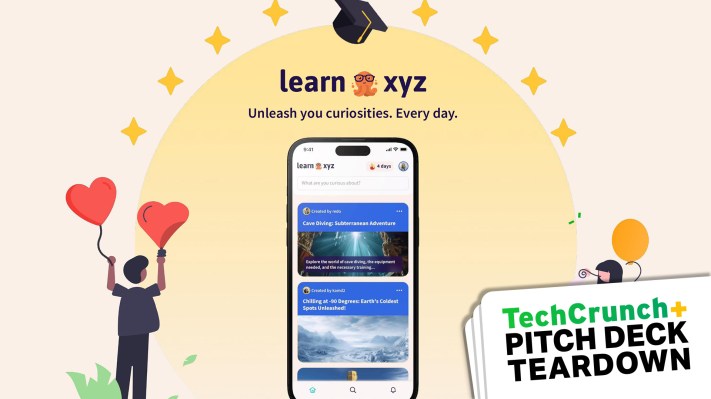Wouldn’t it be great if instead of having to spend all that time making your own educational content, you could get an AI to do it for you? That’s the general thesis behind Learn.xyz, and it helped the company close $3 million. Parts of the pitch make it really easy to see why it was successful in closing the round, and other parts . . . well, we’ll get to that.
We’re looking for more unique pitch decks to tear down, so if you want to submit your own, here’s how you can do that.
Slides in this deck
Learn.xyz has a fun and lightly animated deck that I can’t capture in screenshots (boo!), but I’ll link to the full pitch deck at the end.
Here is the full, 10-slide deck the company used to pitch its company, closing its $3 million seed round:
- Cover slide
- Team slide
- Vision slide
- Problem slide
- Solution slide
- Product demo slide
- Traction slide
- Why Now slide
- Revenue model slide
- The Ask slide
Three things to love
I love the bold brevity of a 10-slide deck, but regular readers of this column are already mentally preparing for the inevitable tongue-lashing (finger lashing?) for all the info that’s missing. Nevertheless, there’s a lot of great content here.
Joyful design
When the founder told me that the company’s pitch deck is animated, thus rendering a PDF version useless, I was ready to go on a tirade about there being no place for animations in pitch decks. But I was dead wrong. The deck works without the animations, but Learn.xyz was able to strike a great balance that adds to the whole experience. Overall, the company’s design language is strong and simple:
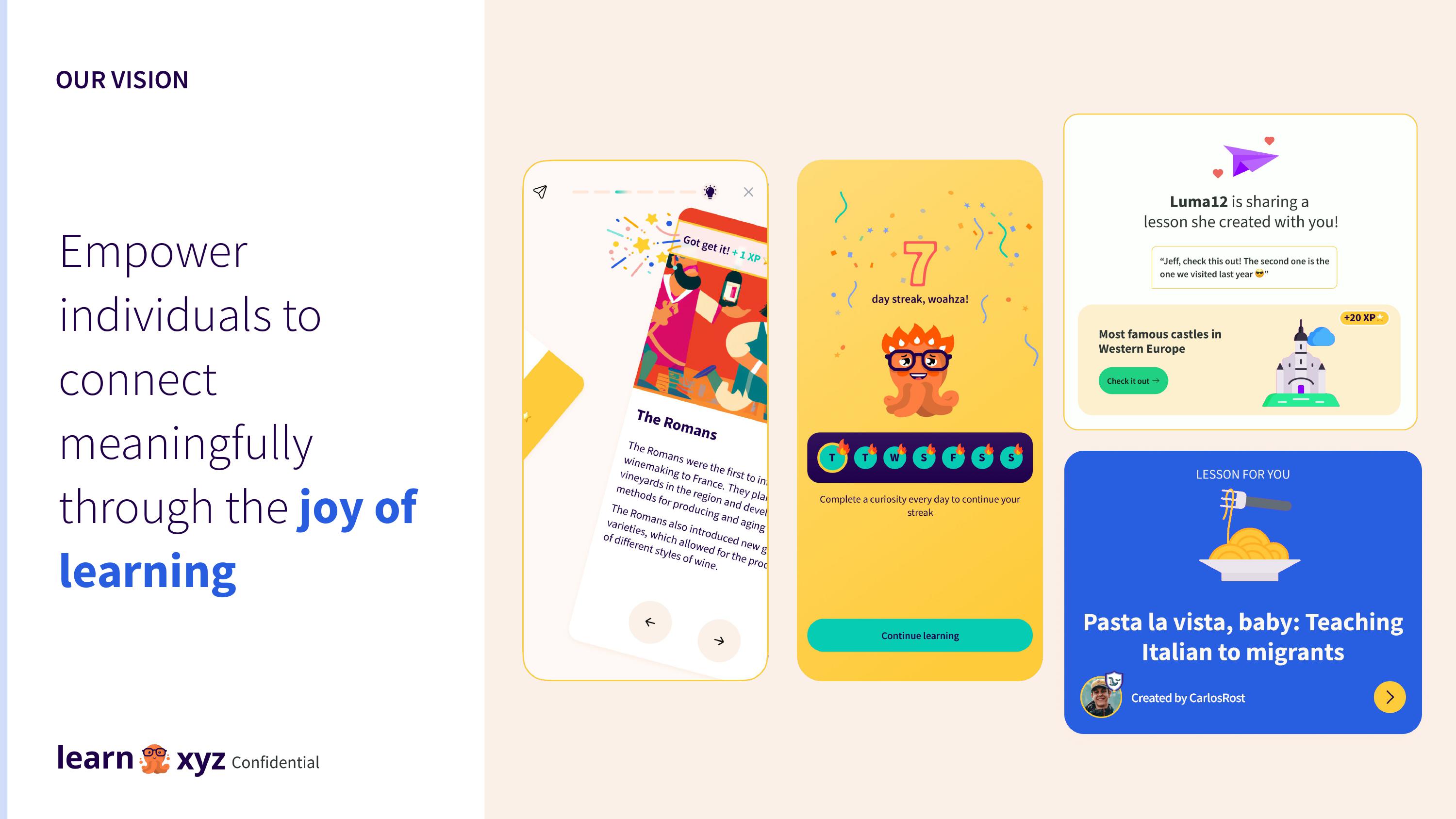
[Slide 3] Fun and lighthearted design. Not too much info on the slides, however. Image Credits: Learn.xyz
Clear problem statement
From my own experience, I know that creating a lesson plan is a royal pain. This slide lays out the problem nicely.
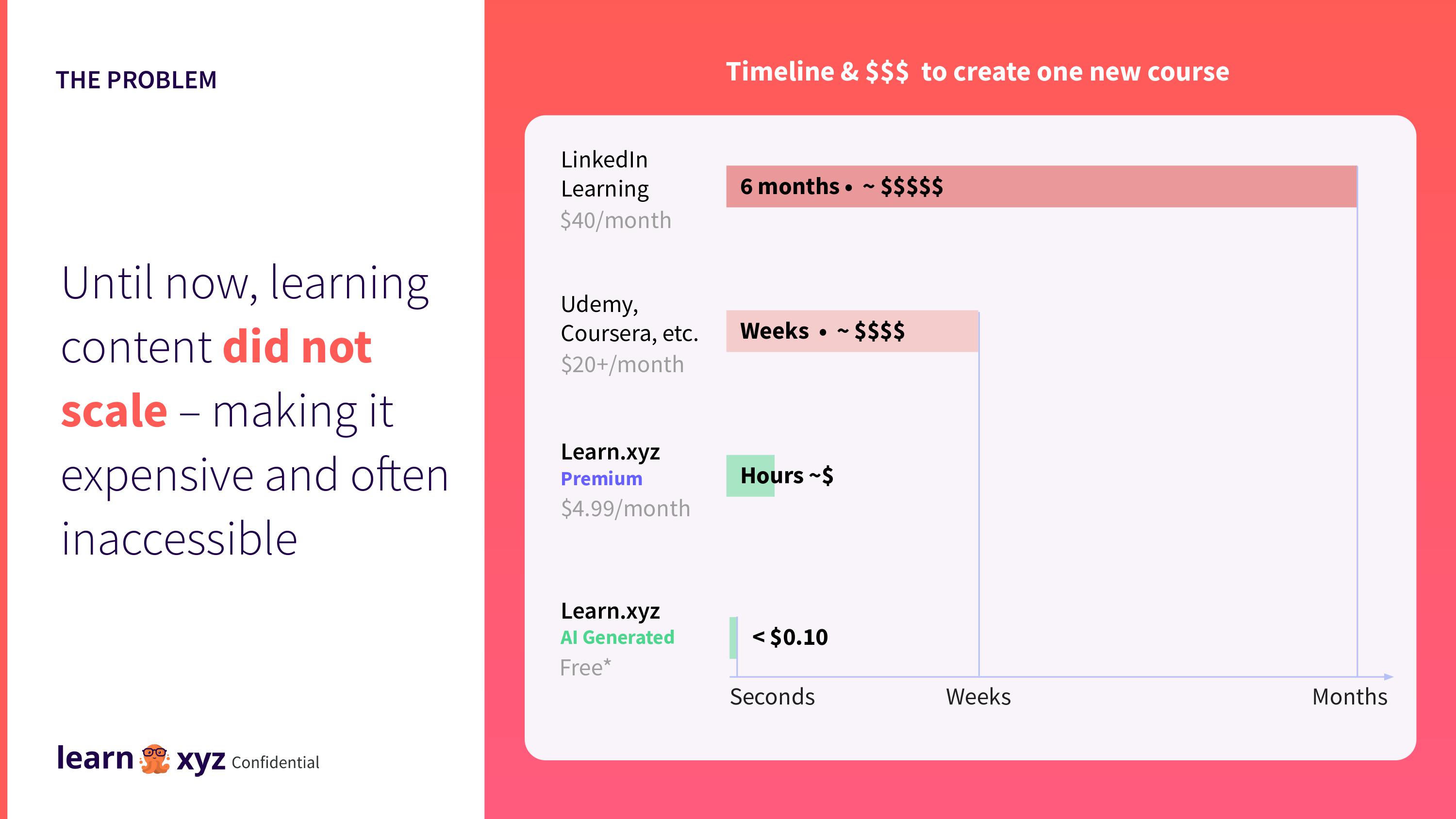
[Slide 4] The problem. Image Credits: Learn.xyz
I would like to very gently, for the record, admonish Learn.xyz for sneaking part of its solution/product into the problem slide, but I’ll let it off the hook; it’s done well and subtly.
That’s a lot of traction, y’all
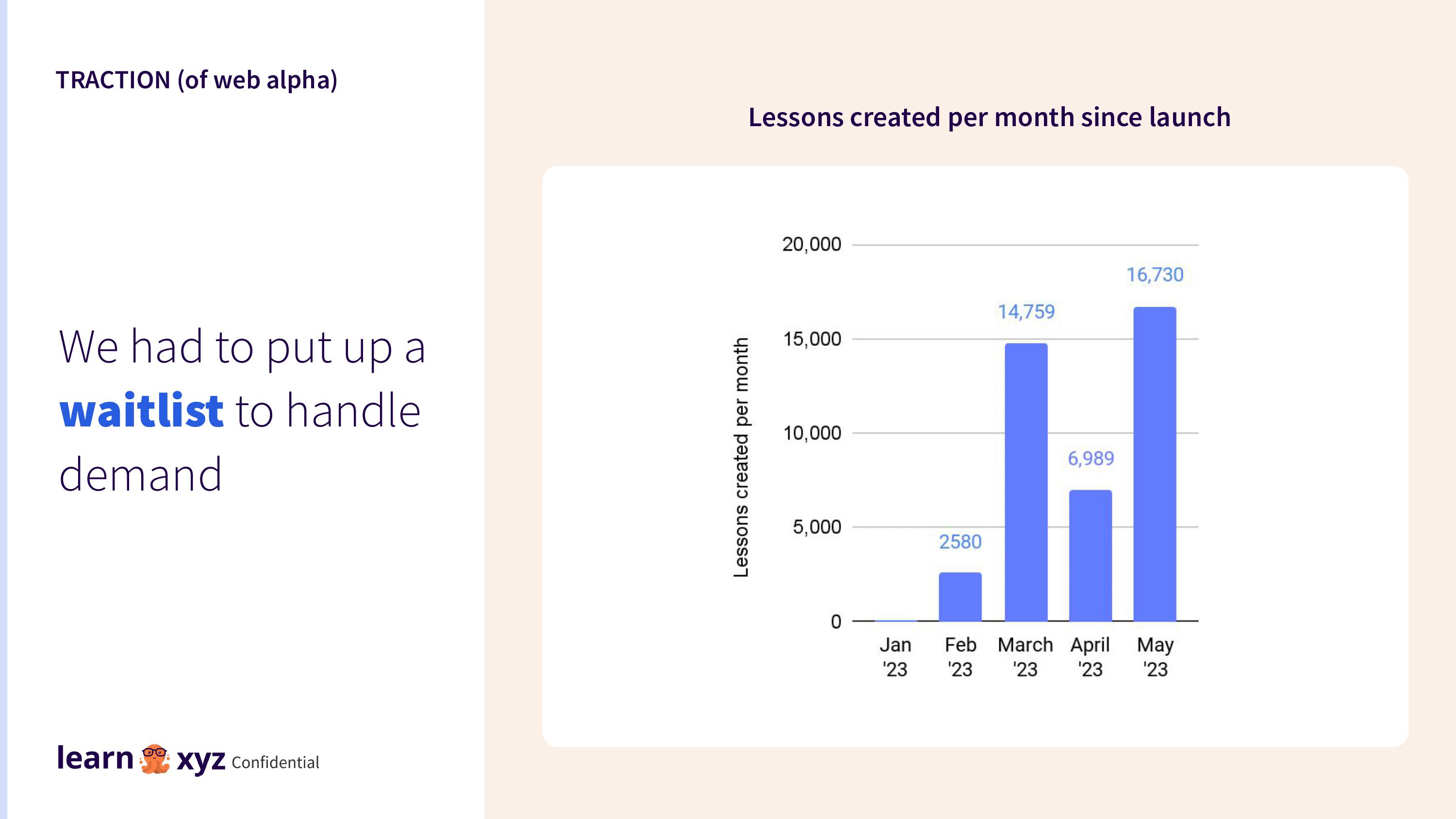
[Slide 7] That’s a lot of traction! Image Credits: Learn.xyz
Of course, there are also some challenges with this graph: What happened in April? Is the number of lessons created really the most important metric for this startup? What about revenue, lessons consumed or customer NPS?
Still, any startup that can get this level of user engagement is worth a closer look, even if both what it is choosing to measure and the measurements themselves are a smidge odd.
In the rest of this teardown, we’ll look at three things Learn.xyz could have improved or done differently, along with its full pitch deck!
Three things that could be improved
Ten slides isn’t a lot these days; I have yet to see a deck that is able to get all the information across in that few slides. And, of course, Learn.xyz falls into the same trap.
Gimme the rest of the info!
Here are some things that are missing:
- Market size: How do you think about the market, how big is it, and how are you going to go after it?
- Go to market: Once you’ve mapped out the market, how do you attract customers?
- Proper traction: Revenue? Users? Completed courses?
- Use of funds: Why are you raising $3 million? What will you spend the money on?
- Competitors: They’re named elsewhere in the deck, so why not just do a proper analysis to show how you think of the market?
- Financials or operating plan: Not a trace. You need one or both.
- Target market: Who are the customers you’re going after?
- Moat: The AI market is booming, and people are already using AI to generate all sorts of content. What’s the advantage that is being explored here?
In fact, there’s so much missing from this deck that it doesn’t really seem like much of a pitch deck at all; it’s more of a teaser deck. That may just about be enough to get a foot in the door with some investors, but without market sizing, or a go-to-market plan, I don’t know whether this company is venture scale. Without a plan for what the company is planning to do with the money, it’s really hard to ascertain whether this is a sensible investment.
Do we have the X factor here?
The team slide is the only particularly poorly designed slide, which is curious, both because it is right at the front of the deck and because it doesn’t do the kind of heavy lifting I would expect to see from a team slide:
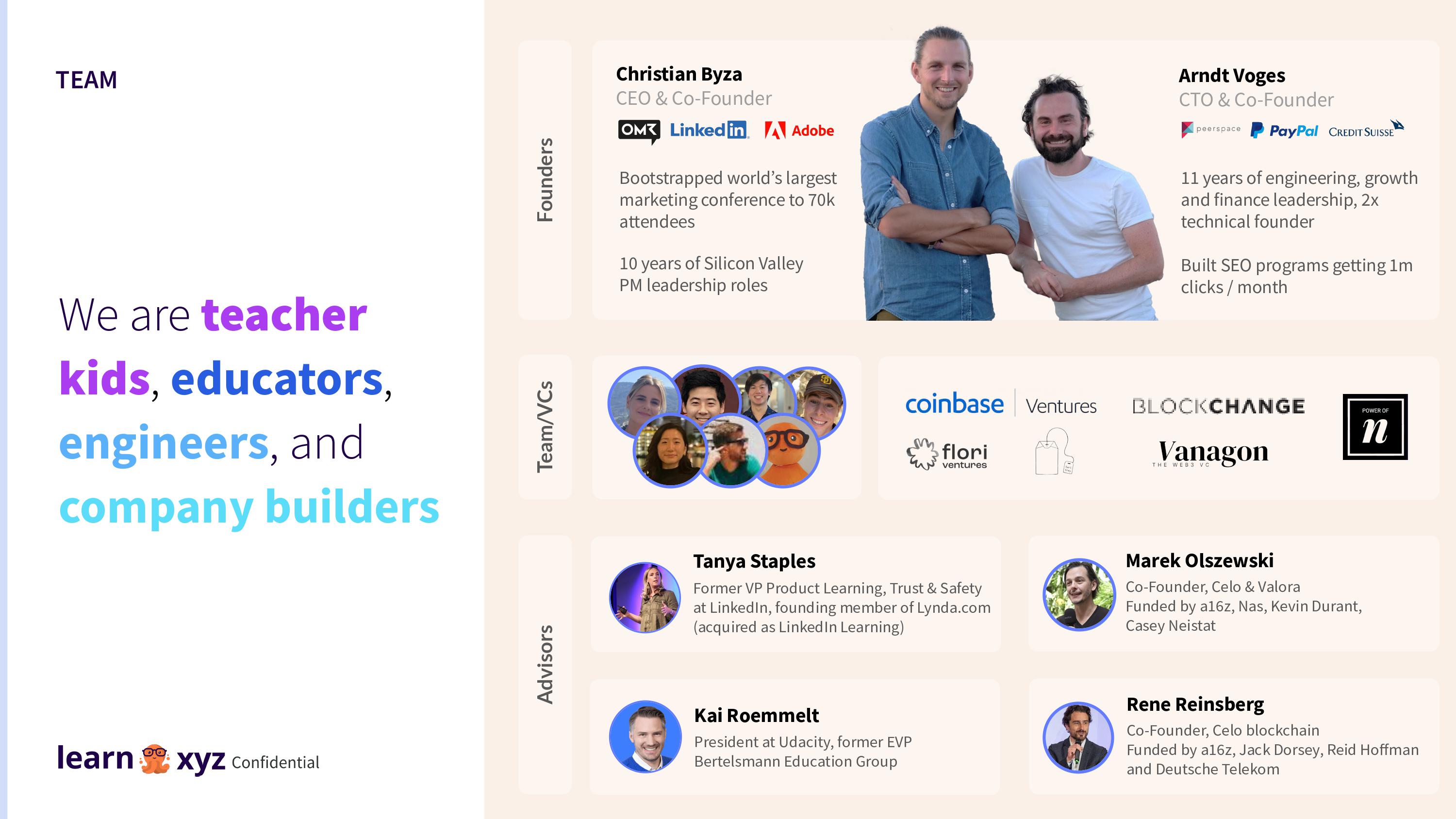
[Slide 2] Hello, team! Image Credits: Learn.xyz
Listing the VCs is a curious brag, especially because none of them seems like the obvious choice for an education app. There are three firms listed that primarily invest in crypto companies, yet there is no mention of crypto or blockchain in this deck. That leads me to suspect that this company has been through a pivot away from the previous Big Hot Thing (crypto) into the Current Big Hot Thing (generative AI). Without some more context, based exclusively on what I see on this slide, I see a number of red flags wafting lazily in the wind.
Having Tanya Staples and Kai Roemmelt as advisers makes sense; Lynda and Udacity are highly relevant companies in this space. It’s less clear why Rene Reinsberg and Marek Olszewski are also advisers.
Wait, what?

[Slide 10] Make people feel what now? Image Credits: Learn.xyz
This pitch deck lacks focus: Is it crypto? Is it blockchain? Is it about enjoyment online? Is it about creating courses? Is it about learning things? Who are the customers? How well is the company doing? Who are these founders, and why are they starting this company?
I might be wrong, of course — I didn’t speak with the founders — but that’s precisely the point of a pitch deck: It should pique my interest in such a way that I’m compelled to schedule a meeting. Instead I’m left scratching my head.
The full pitch deck
The full pitch deck is best experienced as a Google Slides deck this time; the animations are cute and really add something!
If you want your own pitch deck teardown featured on TC+, here’s more information. Also, check out all our Pitch Deck Teardowns and other pitching advice, all collected in one handy place for you!
